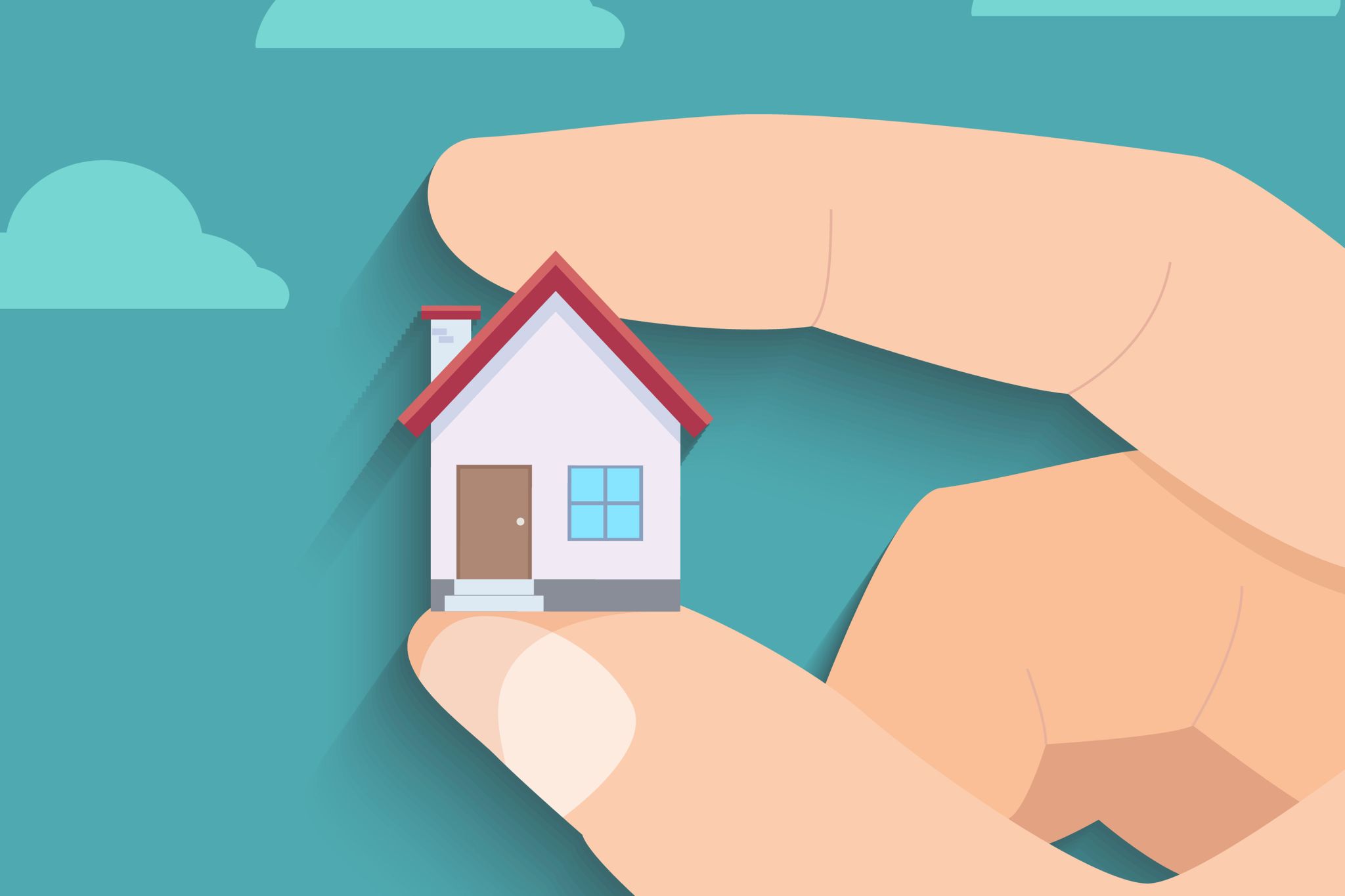The moment you walked into that adorable bungalow, you knew it was "The One." It wrapped its cozy, snug-as-a-bug feeling around you and practically whispered, "Buy me."
So you did!
Now you're ready to make your dream-home Pins happen for real.
But, as a small-home owner, be cautious. Follow the wrong inspirational trend, and you could end up designing a too-teeny-to-be-comfy space.
Beware of any home project that calls for:
#1 Ceiling Lights
That's because overhead lighting (including recessed lighting) illuminates the room — emphasizing its size. And when you don't want to emphasize a room's size (we're looking at you, tiny living room), it's better to break it up into individually lit areas that draw the eye to different spots.
So you may want to rethink that vintage mid-century light fixture you've been lusting after at the ReStore.
Think table and floor lamps, says Toni Sabatino, a Long Island interior designer, who reminds us to not forget about the function while transforming the form. Where will you sit to read? How much light do you need over the dining room table?
"Task lighting adds not only function," she says, "it adds charm and visual interest."
#2 Painting Every Room a Wildly Different Color
In large houses with large rooms, each room can be its own color universe. Yet, the same tactic will only make your smaller home look like a whole world of crazy.
The colors really should coordinate, since you usually can see into more than one room at a time in smaller homes, says Sabatino.
But that doesn't mean you have to go with just one neutral color. (Could anything be more boring?)
Think one color palette with a few colors and stick with it, Sabatino says.
Related: A Brilliant Way to Create a Color Scheme for Your Home
#3 Sliding-Glass Shower Doors
Glass doors on your tub have got to be better than that mold-growing shower curtain you've got now, right?
Plus, won't glass (because it's see-through) make the room feel bigger?
Not really.
While a traditional glass-door tub enclosure may seem like a good idea, it's really more like putting up a permanent wall. It divides your already-cramped bath into two even tinier spaces. Never mind how to get all the soap scum off those yucky parts where the doors overlap. And when you blow-dry your hair? Hello, bruised elbow.
Instead, add a glass panel that goes one-third to halfway across the tub. They're not that expensive (starting around $250), especially for the expansive feeling they'll add to your bath without you actually having to knock down walls.
And cleaning? Super easy because a) some panels swing out a bit to make tough spots easier to reach, and b) there's less to clean!
#4 Filled-Up Rooms
“I talked to a brilliant architect who designs tiny houses and he doesn't look at square feet, he looks at cubic feet," says Suzanne Felber, a designer in Dallas.
When you look at a room that way, you realize things like winged armchairs, sofas with overflowing cushions, ornate hutches, decorative what-nots (and clutter!) all have extra bulk that make a room feel overfull.
Minimalist furniture that maximizes function, not flair, and a clutter-free strategy will make the room feel spacious — and still be super comfy.
Sabatino suggests using streamlined sectional sofas and tables that can have pieces pulled out and moved around, making it easier to entertain larger groups, and then rearranged for a more intimate setting.
#5 The Stark, Dark Kitchen Look
You looooove the look of today's modern, dark kitchens — especially their espresso-colored cabinets. So rich-looking. So statement-making. You also love Scarlett Johansson's pixie cut, but that doesn't mean you can pull it off.
There's a reason designers use light-colored cabinets in small spaces. Light colors reflect light, making a room seem larger. And dark colors, well, they do the opposite.
Does that mean that you mustn't even consider those espresso cabinets? Not necessarily.
If you incorporate them more as an accent or focal point, they can work. “If you have dark cabinetry, and [lots of] white walls it can really pop, says Felber.
But if your kitchen walls are all cabinets (lucky you, storage-wise!) with hardly any blank wall space, "you're going to end up with a cave," says Felber.
Related:
